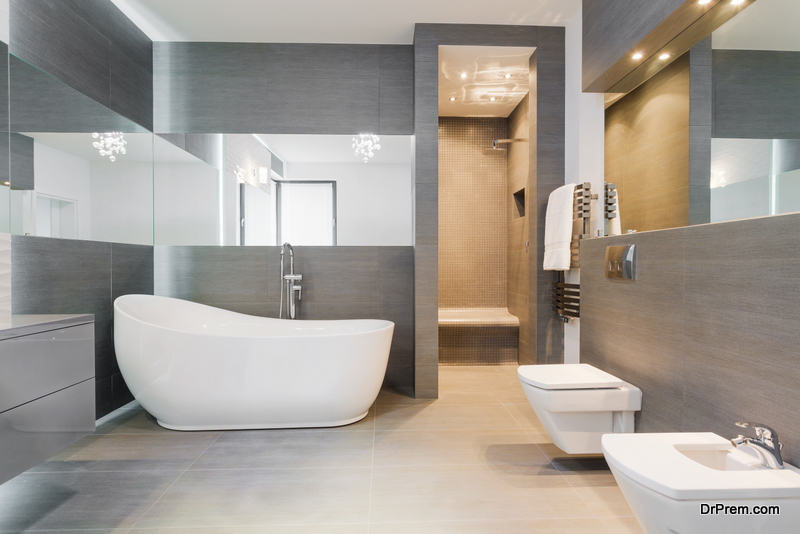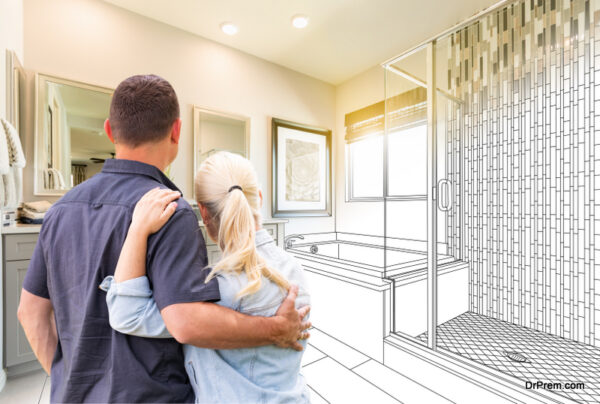When building and designing a wet room, keep in mind that it is a more complex process than simply installing a shower cubicle. Unlike a traditional bathroom, a wet room is a precisely constructed bathing area that depends on a variety of elements to guarantee optimum performance, safety, and waterproofing. It requires thorough planning and consideration for ensuring longevity and being completely and effectively waterproof.
If you are building the whole house from the ground up, you cannot overlook the very fact of how much money is essential for its completion. And so, sometimes the value of the wet rooms exceeds the budget. You could try installing it yourself. It will take you a ton of time and cost you a ton of money to source all the materials and equipment for the job. That is why we recommend hiring a professional to install your wet room as they will only take a few days to a week to fit everything in.
Always choose the right wet room designers and service providers, as well as compare wet room installation prices to prevent burning a big hole in your pocket. The cost of building a wet room ranges from £4,000 to £12,000 depending on the design. But let’s not forget that a wet room adds significant value to your home so it is worth it.
You are probably asking, what is a wet room?

Wet rooms are first and foremost open-plan showers with waterproof floors and walls. The shower floor is level with the rest of the room because of built-in drainage which takes the place of a standard shower tray. Wet rooms can either be installed in new rooms or retrofitted, for instance converting a garage, spare bedroom, or existing bathroom.
Wet rooms are achieving more popularity because they take up less space, which makes them suitable for smaller bathrooms because you don’t need to install a shower cubicle in a limited space that can otherwise restrict movement. Also, they are considered to be a more stylish variant in comparison to the regular shower area. So if you prefer a modern and contemporary design in your bathroom, this is often a viable option.
The advantage of wet rooms is that they give you the ability to create precisely what you have in mind with a palette of design options. And in today’s modern lifestyles, wet rooms do offer a perfect luxurious experience.
If you already started building your wet room, take a look at this planning guide, and you’ll find all the key considerations.
First thing first, get the drainage system right
When you want to implement the wet room ideas, first make sure that you have detailed knowledge of the drainage system that is connected with the wet room, so that there won’t be any setbacks. The easiest way to build a wet room is by using a formed shower base with a built-in gradient towards a drain. The tiles are cut and modeled to follow this incline so that the water quickly runs away. When you’re installing a power shower the first thing you should do is check the flow-rate of the drain. You certainly don’t want water pooling up around your feet!
The floors, ceiling, and other spaces in the wet room have to be waterproofed/tanked, so you can prevent water from seeping through.
Waterproofing

Wet room waterproofing requires priming the ground floor, the wall area all over the shower, and the lower sections of the entire room. Ideally, the tiles are put onto a membrane layered with glue paste. To prevent situations where water would fill the flooring, the door threshold must be raised above the normal level. This would happen if the drain gets clogged.
A professionally installed and well planned waterproof wet room will not only look outstanding but will offer practical benefits too. It’s essential to get all the details about the technicalities right for the wet room, so it can function properly. Get advice from a specialist on the most appropriate design and products for your home.
Choosing sanitaryware for a wet room
The sanitaryware should be with smaller dimensions in your wet room. But not so small that the item is hard to use. You can get sinks with small dimensions that take up barely any space and work well for a fast hand wash, but won’t be easy to wash your face.
For the shower area, go no smaller than 80cm x 80cm – so you won’t have a claustrophobic showering experience. And if you’re using glassed design, enrich it with something, like a border, or frosting, or motif on the glass, to make certain it is visible.
When choosing sanitaryware, consider a lavatory with a concealed cistern. It makes the ground more visible and removes visual clutter.
Plan wet room lighting

A flexible wet room lighting scheme will guarantee enough brightness of the room for tasks such as shaving and putting on make-up but can have a soothing ambiance for showering.
Downlights can provide the space with good overall light, while task lighting around mirrors will make precision tasks easy. It is crucial for the wet room lighting to be suitable for the zone of the room it’s in and determined by its proximity to a water source. So, the best is to collaborate with an expert in electricity, who has a thorough understanding and experience.
Final words
By now, you got a clear picture of what wet room design looks, and what you need to consider for building one. So, it’s up to you to decide whether you will opt for it. If you get a wet room, you should confirm that it slopes smoothly towards the drain, is well designed, and is functional enough to fit your needs.
With that said, we are wrapping up this guide, hoping that it has helped you find what you’ve been looking for.
Article Submitted By Community Writer




